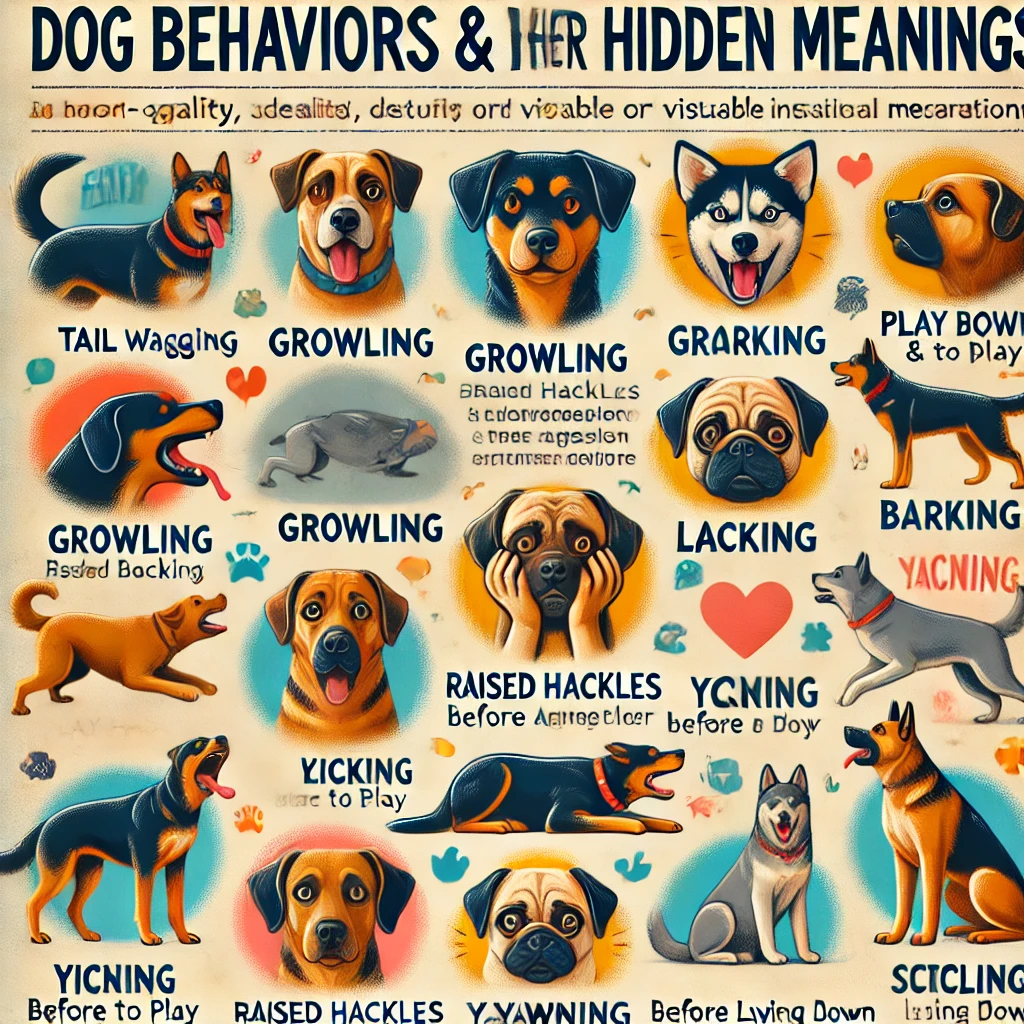Articles
20 Common Dog Behaviors & their Hidden Meanings
“Dogs have a unique way of communicating; it’s all about understanding their silent language,” echoes the sentiment behind Orhan Pamuk’s insightful quote. It’s up to us as dog owners to learn the cues and signals in this special language.
How to Understand Your Dog
Decoding dog behaviors opens up a world of connection between you and your furry friend. With patience and careful observation, you can learn to interpret their tail wags, barks, and other actions, meeting their emotional and physical needs effectively.
20 Common Dog Behaviors Explained
1. **Wagging Tails**: A dog’s tail is a powerful communication tool. A high, fast wag often shows excitement, while a slower, lower wag might suggest submission or uncertainty. Understanding the nuances such as speed and height can reveal a lot about their mood.
2. **Chewing**: Dogs, especially puppies, chew for multiple reasons, like teething pain relief or stress reduction. If your dog is excessively chewing, providing toys or treats like the Himalayan Cheese Chews from Dogsee could be beneficial.
3. **Ear Movements**: Ears are expressive. Perked-up ears may indicate curiosity or alertness, whereas ears laid back can signal fear or submission. Paying attention to their ears can provide insight into their feelings.
4. **Yawning**: Dogs yawn when tired, but also when confused or stressed. Context clues like the environment can help distinguish between these different types of yawns.
5. **Head Tilt**: Dogs often tilt their heads to better understand the sounds they hear, which helps them focus and shows their attempt to comprehend human speech.
6. **Standing on Hind Legs**: This behavior can be a call for attention or an expression of affection, such as when seeking a hug or a treat.
7. **Bringing Toys**: When dogs bring you toys, it’s a sign of affection and trust, not always an invitation to play.
8. **Exposing Belly**: A sign of trust and submission, when a dog shows you its belly, it often seeks affection or acknowledges you as the leader.
9. **Puppy Eyes**: Those big, soulful eyes often mean your dog is trying to communicate affection or is hoping for some reward, like treats or attention.
10. **Barking**: Different barks convey different messages – from warning of intruders to simply inviting play.
11. **Stretching**: Beyond muscle warm-ups, stretching can be a greeting to express joy at seeing you.
12. **Genital Licking**: While normal grooming behavior, excessive licking may indicate health issues like infections, warranting a vet visit.
13. **Panting**: Besides cooling off, panting can signify excitement or stress and sometimes the effects of medications.
14. **Growling**: Usually a warning of feeling threatened, though sometimes it can indicate playfulness. Understanding the growl’s context is crucial for appropriate responses.
15. **Sniffing the Air**: Dogs explore their environment through scent, detecting the presence of other animals, people, or intriguing smells.
16. **Raising Paws**: This inviting gesture is often a call for attention or affection.
17. **Zoomies**: Sudden bursts of energy can signal excitement or a playful mood, often an invitation for interaction.
18. **Tongue Out**: A relaxed tongue usually signals contentment, but if persistent, consult a vet for conditions such as ‘Hanging Tongue Syndrome.’
19. **Wrinkling Muzzle**: An indication of aggression or stress, particularly if accompanied by bared teeth.
20. **Rapid Eating**: Sometimes a sign of anxiety, using special feeding techniques can help slow them down for healthier eating habits.
Building a Strong Relationship with Your Dog
Understanding your dog’s behavior can enhance your bond. Always respond with patience and attention. If you suspect any behavioral issues requiring expert help, don’t delay consulting a vet or a professional trainer.
For more tips on nurturing a healthy relationship with your pet, join our community and stay informed on how to give them the love and care they deserve.

